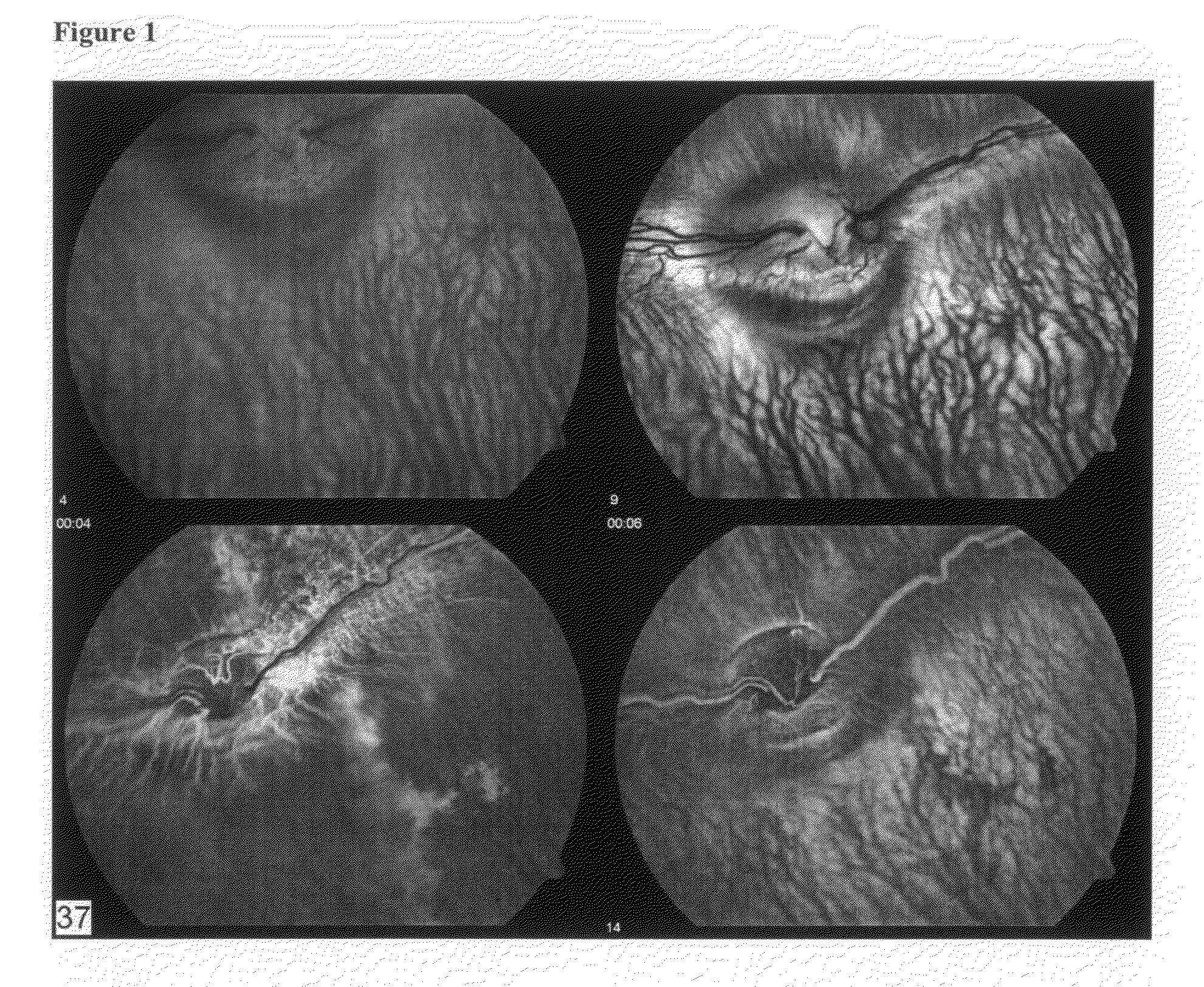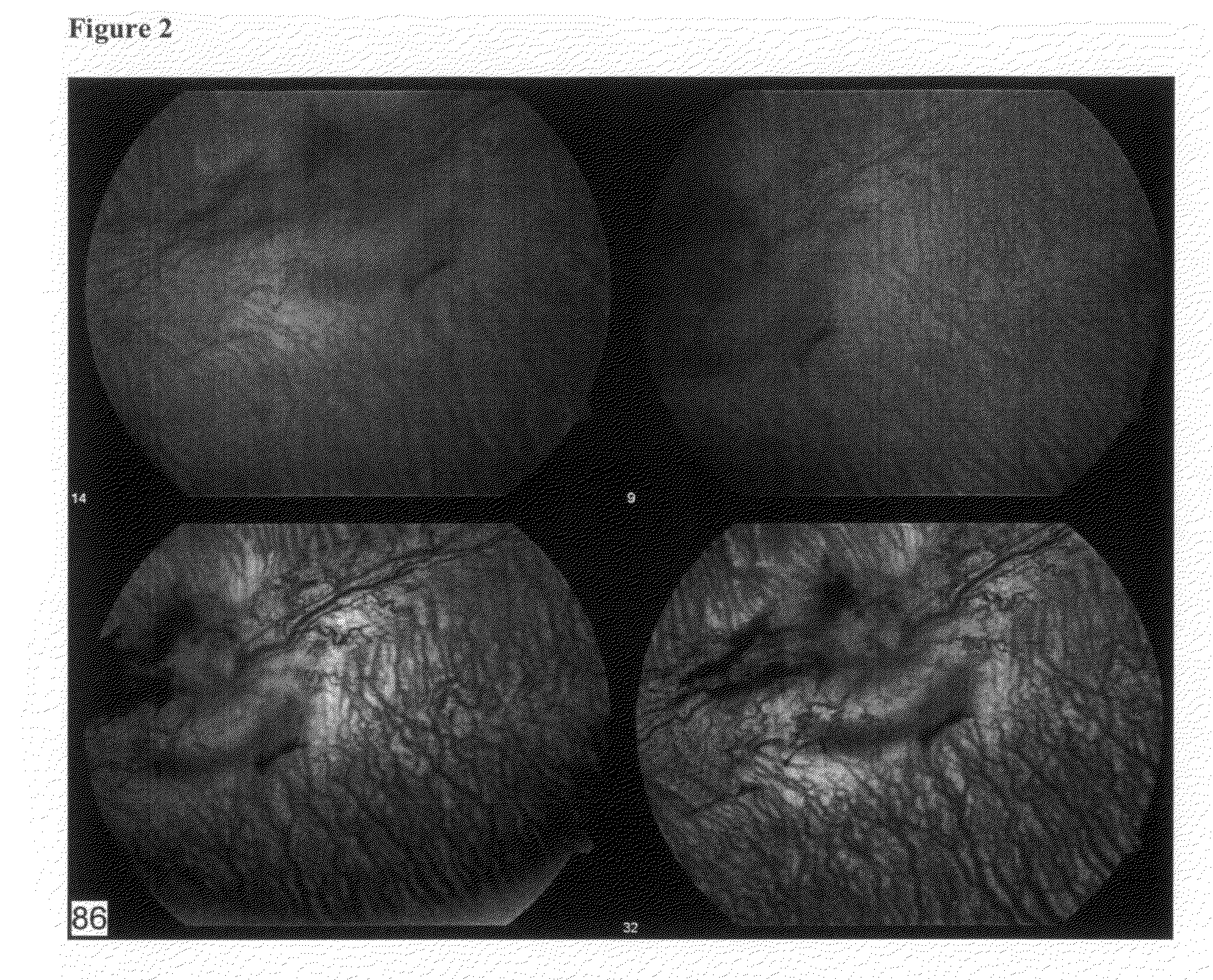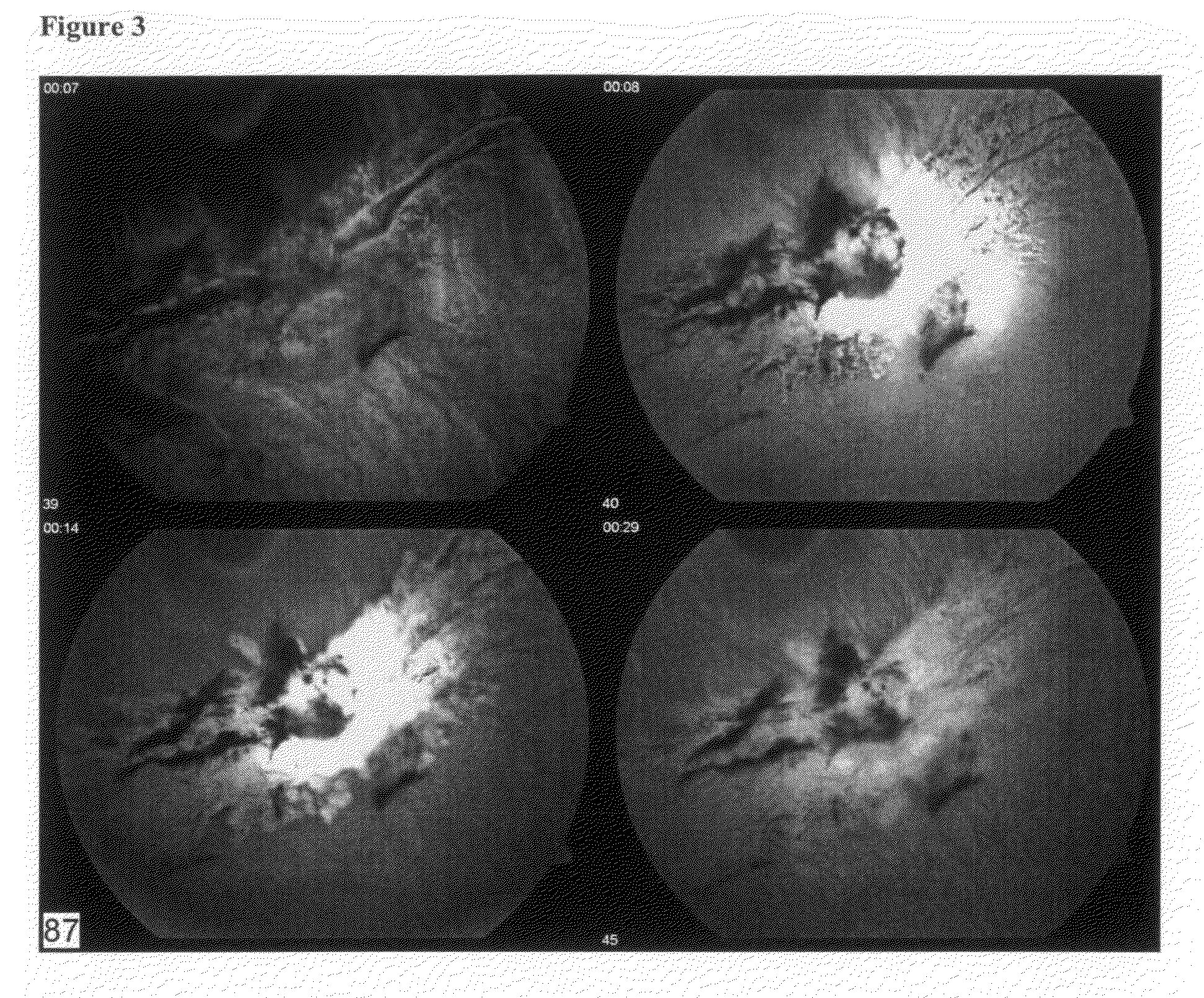Compositions and methods for treating ophthalmic disorders
a technology for ophthalmic disorders and compositions, applied in the field of compositions and methods for treating ophthalmic disorders, can solve the problems of reducing peripheral and night vision, no clinically proven non-surgical alternative, exacerbate neuronal loss and ischemia in diabetic eyes, etc., to prevent vascular leakage, enhance endothelial cell survival, and induce angiogenesis
- Summary
- Abstract
- Description
- Claims
- Application Information
AI Technical Summary
Benefits of technology
Problems solved by technology
Method used
Image
Examples
example 1
[0089]The following example describes the effect of Ang-1 on vascular permeability and retinal neovascularization in an in vivo model to treat an ophthalmic disorder such as retinopathy.
[0090]As described above, VEGF-A may be increased initially in preclinical DR as a mechanism to maintain the integrity of the retinal vascular bed. Vascular occlusion results in endothelial cell damage, a thickened basement membrane and changes in the red blood cell. In later stages, high VEGF-A production in ischemic areas, where VEGFR-2 is upregulated, then leads to loss of pericytes, vascular leakage and neovascularization. In proliferative DR (PDR), intra-ocular neovascularization is likely caused by high levels of VEGF-A in the vitreous derived from widespread production of this factor by ischemic retina.
[0091]Animal Models for diabetic retinopathy include hyperbaric oxygen models, diabetic Torri rat models, and animal models in which Bruch's membrane is intentionally breeched. Bruch's membrane ...
example 2
[0116]Experiments were performed to determine if angiogenic and / or cell proliferation genes were up or down-regulated in EC expressing Ang-1 as compared to naïve EC, and SMC expressing VEGF as compared to naïve SMC. The effect of conditioned medium from SMC expressing VEGF on both naïve and transduced EC was also determined.
[0117]Template cDNAs prepared from total RNA of human endothelial and smooth muscle cells were characterized using the Human Angiogenesis PathwayFinder™ PCR Array (Super Array) with the RT2 SYBR Green / Fluorescein PCR master mix on the ABI 7000 cycler.
[0118]Table 3 shows the result of the analysis of 84 genes as described above. Less than a 2 fold change in expression was not considered to be significant. As shown in Table 3, a variety of angiogenic and cell proliferation genes are up or down-regulated.
PUM
| Property | Measurement | Unit |
|---|---|---|
| size | aaaaa | aaaaa |
| time | aaaaa | aaaaa |
| time- | aaaaa | aaaaa |
Abstract
Description
Claims
Application Information
 Login to View More
Login to View More - R&D
- Intellectual Property
- Life Sciences
- Materials
- Tech Scout
- Unparalleled Data Quality
- Higher Quality Content
- 60% Fewer Hallucinations
Browse by: Latest US Patents, China's latest patents, Technical Efficacy Thesaurus, Application Domain, Technology Topic, Popular Technical Reports.
© 2025 PatSnap. All rights reserved.Legal|Privacy policy|Modern Slavery Act Transparency Statement|Sitemap|About US| Contact US: help@patsnap.com



